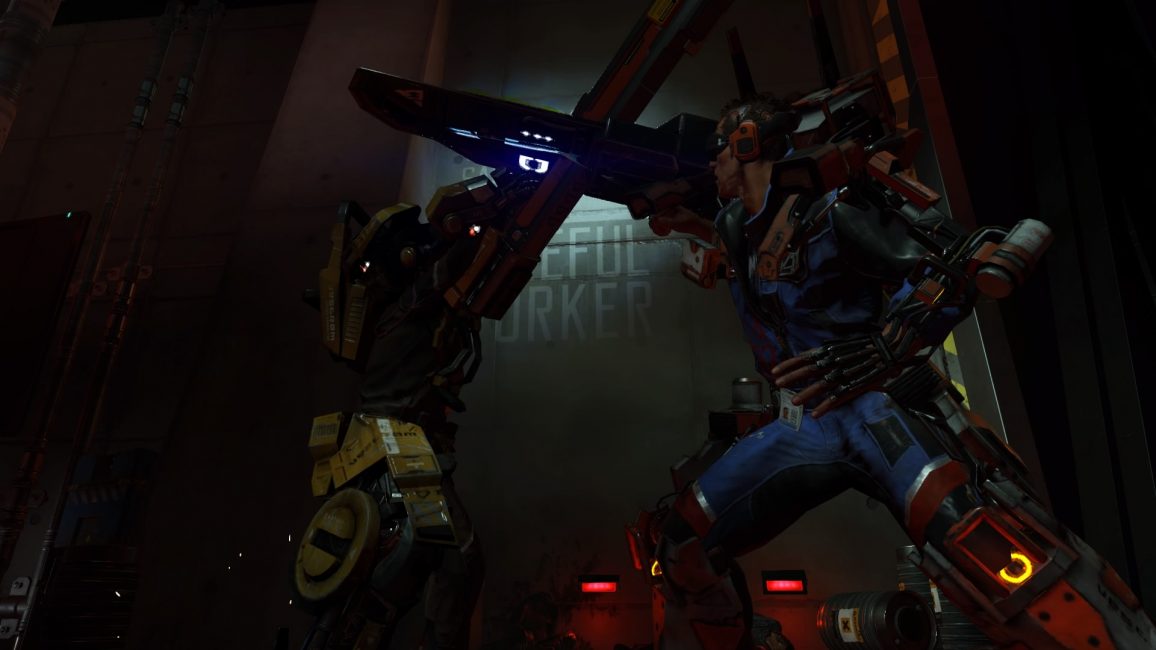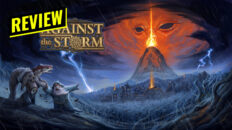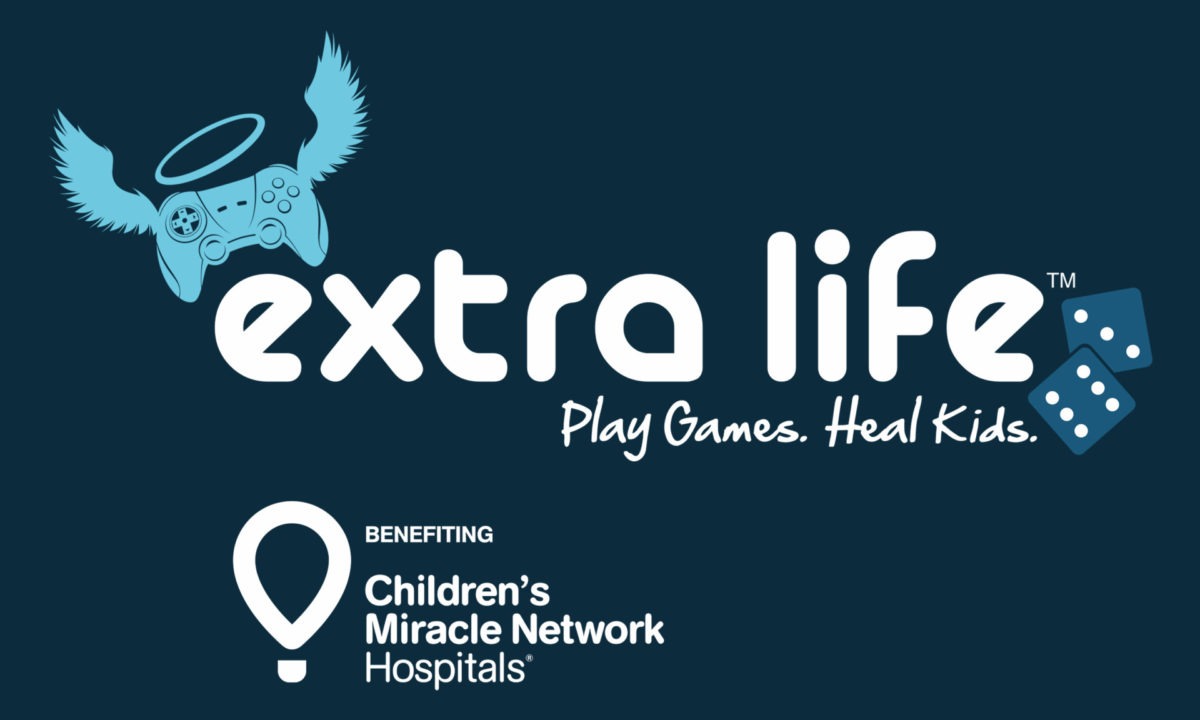Developer: Deck13 Interactive
Publisher: Focus Home Interactive
Reviewed on: PlayStation 4
Code Received.
“The dimly lit corridor swallows you, your boots clanking against the metal floor of the industrial walkway. It still hurts where the exosuit was connected to your body, but the pain has since become a reminder that you still live. As you turn the corner you hear it again, the roar of humanity lost, the scraping of metal on metal as he charges you. It’s just another fight for your life.”
Set in a world ravaged by war and global warming, The Surge thrusts players into the shoes of Warren, a wheelchair-bound man on his first day at the high-tech corporation Creo, with promises of a better life. It’s about then when the game delivers a sucker-punch in the form of a company issued exoskeleton getting painfully grafted to Warren. Something has gone horribly, terribly wrong. Discarded like a failed product, Warren wakes up in an abandoned, damaged part of the Creo facility. If he needs a way out, he’s going to have to fight to survive.
The Surge is Deck13’s second stab at a Soulslike after Lords of the Fallen. Abandoning the fantasy setting the genre has come to be known for, The Surge instead take place in a more sci-fi setting. There’s no spaceships here, but there’s a healthy variety of robots and exosuits. While the departure in setting could be seen as a welcome change, there was just something about the Creo facility that felt missing.
There’s the definite feeling of what was once a functional industrial facility, but the environments end up feeling a little drab and mundane. Of course there’s environmental storytelling; the odd graffiti here, a smear of blood there, but it’s not enough to keep the environments from feeling repetitive. Walking around felt more like pushing my way through a fabricated level than a world. And where other games in the genre spark imagination, this just feels like an oversight. There’s only so many dimly lit industrial corridors you can walk through after all.

Abandoning item descriptions, The Surge instead opts for audiologs to deliver much of its story. Presented through people you’ll never meet, the logs hint at bits and pieces of exactly what’s gone wrong behind the walls of Creo. There’s a number of NPCs scattered around the world in classic Souls fashion too, often needing a little help of their own. While I was initially excited every time I came across an audiolog, they quickly lost charm. I wouldn’t listen to it as it played and I barely even went back to listen to the others in my collection. The audiologs just don’t feel relevant to your situations, or really to the world at large. They’re a window to what might have happened, but not one into the larger world around you. Of the NPCs, let’s just say I won’t remember many of them a month from now.
Fortunately, some of The Surge’s best material lies instead in its systems. Warren’s level is represented by his exoskeleton’s Core Power instead of just a number. This Core Power ties into nearly everything else and it’s used to customize Warren to your tastes. It determines which of the neural implants you can have active, or what gear you can have equipped. It’s also directly influences your base health. Each implant, each piece of equipment puts it own demand on the Core. The higher this power, the more you can have going at any one time. Certain terminals also require overcharging, locking away areas of the game until you’ve got enough juice to spark them up. This paves the way for a robust customization system. Managing Core Power with your playstyle is key. You could shield yourself in heavy armor or load up on enough implants to power up to inhuman levels. I chose to go with a nice balance between the two, but still found myself hanging around the OPs rooms trying out various options.
OPs rooms are The Surge’s equivalent of bonfires. Sparser than their campsite counterparts, OPs rooms provide shelter for you and most NPCs you happen to find around the world. They’re also where any new equipment can be manufactured. There’s a healthy variety of equipment and weapons within the game, adding to the customization already present in the variety of implants. Luckily enough this is also where Scrap can be banked, effectively saving up on the game’s primary resource.

Within the walls of Creo, Scrap presides over all. The resource allows you to level up and is required for crafting and upgrading any and all gear. It’s a pity then that The Surge almost punishes you for daring to explore too far and too curiously. It took me a moment to realize just what the timer on the right side of my screen meant the first time I died.
Dropped Scrap has a timer attached to it, which renders it completely lost upon hitting zero, and this is something I had a profound issue with. In Dark Souls and Bloodborne dying and losing their respective resource meant you were a lot more careful in its recovery. Here the game wants you to break into a mad dash to recover something that was probably gathered over a number of nail biting encounters. It’s disheartening to see that timer tick down. It’s a sense of loss birthed not through your own greed or failure, but through something you have no control over.
Combat is where the The Surge truly manages to shine. Well, nearly. Rather than just lock onto an enemy, you’re instead able to target each specific body part for your attacks. You can focus on a certain part in a levy of blows before unleashing a powerful finishing blow that cleaves the part from your foe. It’s an interesting twist to the standard combat of the games of this ilk and ties heavily into the game’s systems. Cleaving parts is central to obtaining new weapons and equipment schematics. They also earn you the required tech required to upgrade said equipment. If there’s a particular headset or gauntlet you fancy, well then it’s time to start hacking away at it to nab that schematic or weapon.

There’s a solid foundation that makes up combat within the game. Depending on the body part selected and the side you’re attacking from, weapon animations switch up. You can go from wielding a one-handed sword to relentlessly swinging it with both hands. Combined with each weapon’s own movesets, this adds a plethora of options to each encounter. There’s a style for nearly everyone and it’s supported by the robust customization system. Which makes it a pity that the enemies you’ll be encountering often end up being one-note. I found myself cheesing most encounters by quick dashing in, swinging and leaping back just to repeat the cycle over again. The variety of moves Warren has access to seems lost on the enemies you encounter. While there were a handful of memorable ones, most enemies end up feeling more or less the same. That ‘aha!’ moment of figuring out an encounter in Dark Souls and Bloodborne is missing here.
I hoped this would be countered by the bosses I’d encounter, but at only five bosses there’s a distinct lack of enemy variety in The Surge. There’s still a couple interesting boss encounters though, and while they’re not all that memorable, they do present a challenge that most playing such games crave. There’s a lot of good design going on here, but it often feels like they stopped just before they reached that pinnacle of awe.
Overall though, The Surge is a worthy addition to the genre, and definitely showcases how Deck13 listened to the criticism on Lords of the Fallen. For any fan of Dark Souls there’s challenge to be found here and I don’t doubt for a moment the community will find a lot here to enjoy, familiar or not. The combat is still satisfying and the environments still ripe for exploration. It just feels like The Surge stopped a little before it was fully charged.









